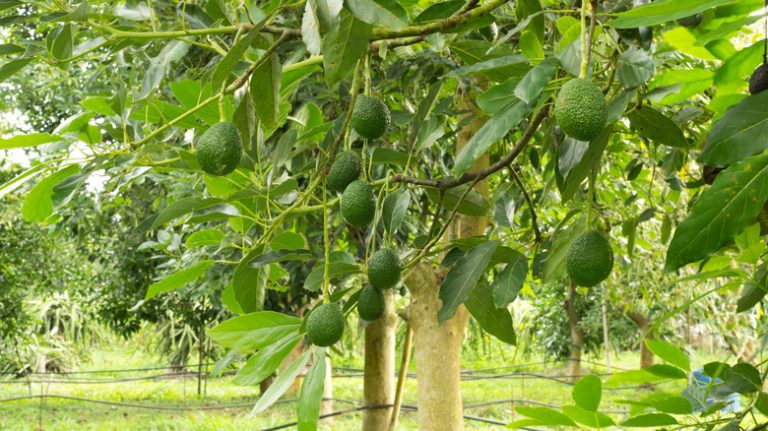Oleander poisoning is a rare but potentially life-threatening condition caused by the ingestion or direct contact with the oleander plant, scientifically known as Thevetia peruviana. Oleander is a common shrub that is native to India and Sri Lanka, though it is now found in many other parts of the world. The plant is highly poisonous, particularly its leaves, flowers, fruit, and sap.
The poison found in the oleander plant is called thevetin, which is a cardiotoxic ingredient. When ingested, it can cause a variety of symptoms, ranging from mild irritation of the mouth and intestinal tract to more severe effects on the heart and muscle function. In some cases, exposure to oleander poisoning can even be fatal.
The symptoms of oleander poisoning can vary depending on the person and the amount of poison ingested. Some individuals may remain asymptomatic, while others may experience nausea, vomiting, abdominal pain, dizziness, and an irregular heartbeat. In more critical cases, oleander poisoning can lead to seizures, muscle weakness, and difficulty breathing.
Recognising oleander poisoning is critical for proper management and treatment. If you suspect oleander poisoning, it is important to seek immediate medical attention or contact your local emergency services. While waiting for medical assistance, you can wash any affected areas with soap and water, but do not induce vomiting. It is also crucial to keep pets away from the plant, as they can also be affected by oleander poisoning.
In conclusion, oleander poisoning is a potentially serious condition that can result from the ingestion or direct contact with the oleander plant. It is important to be aware of the symptoms and take precautions to avoid exposure. If oleander poisoning is suspected, seeking medical help is essential for proper management and treatment.
Oleander Poison
Oleander poisoning is a serious condition caused by the consumption of certain parts of the oleander plant (scientific name: Nerium oleander). This common shrub is known for its beautiful flowers, but it is also highly toxic to humans and animals.
The oleander plant contains several toxic compounds, including oleandrin and neriine, which can be deadly if ingested. The severity of symptoms and prognosis may vary depending on the amount of plant material consumed and the size of the person or animal.
Common symptoms of oleander poisoning include gastrointestinal irritation, vomiting, diarrhea, and abdominal pain. In severe cases, it can also lead to symptoms like low blood pressure, irregular heart rhythm, and even death. If you suspect oleander poisoning, it is important to seek immediate medical or veterinary attention.
In India, where oleander is commonly found, it is known by various names such as kaner in Hindi and thevetia in Sanskrit. In Spanish-speaking countries, it is often referred to as adelfa or laurel rosa.
If oleander poisoning is suspected, it is important to take the following steps before seeking professional help:
- Remove the person or pet from the vicinity of the plant to prevent further exposure.
- Flush the affected area with water to wash away any plant sap.
- If ingested, do not induce vomiting without medical advice, as this can sometimes worsen the situation.
- Contact a poison control hotline or emergency veterinary service for further instructions.
In some cases, medical management may involve administration of activated charcoal to bind the toxic compounds and prevent their absorption. In severe cases, supportive care such as intravenous fluids, monitoring of vital signs, and cardiac medications may be necessary.
In a case study conducted by Tripathi et al., it was found that oleander poisoning responded well to gastric lavage and administration of atropine. The patient, a 35-year-old male, showed improvement after treatment and was discharged from the hospital after a few days.
In summary, oleander poisoning is a serious medical emergency and recognizing the signs and symptoms is crucial for prompt management. Precautions should be taken to avoid contact with the plant, especially by children and pets. If oleander poisoning is suspected, it is important to seek immediate medical attention to ensure the best possible outcome for the affected person or animal.
Other Common Name
Oleander poisoning, also known as Thevetia poisoning, is a potentially deadly toxicity resulting from exposure to the toxin found in the plant known as Thevetia peruviana. This plant is also commonly known by other names, such as yellow oleander, lucky nut, be-still tree, and Indian oleander.
Common Names in Spanish
Oleander, a highly toxic plant, is known by different names in various countries and regions. In Spanish, it is commonly called “adelfa”. Other common names in Spanish include:
| Country/Region | Common Name |
|---|---|
| Argentina | Laurel Rosa |
| Colombia | Rascavieja |
| Honduras | Rosado |
| Mexico | Curiana or Trinitaria |
| Puerto Rico | Azucena |
| Venezuela | Rosalinda |
It’s important to note that these names may vary within different regions or even among different populations within the same region.
Where is it found
Oleander, also known by its scientific name Nerium oleander, is a highly toxic plant that can be found in various parts of the world, including Asia, Europe, and Africa. It is native to the Mediterranean region and is commonly cultivated for its attractive flowers.
In India, oleander is commonly found in gardens and parks, and its flowers are used for religious purposes. In Australia, it is a popular garden plant and is often used as a hedge. In Sri Lanka, the plant is known as “kaneru” and is also grown for its flowers.
Oleander is also found in other parts of the world, such as the United States, where it is used as an ornamental plant. It can be found in warmer regions of the country, particularly in the southern states.
The plant contains toxic compounds, including oleandrin, which is responsible for its poisonous effects. These compounds are found in all parts of the plant, including the leaves, flowers, stems, and roots.
It is important to note that oleander poisoning can occur through direct contact with the plant, ingestion of its parts, or inhalation of the fumes from burning oleander materials.
Due to its popularity as an ornamental plant and its widespread availability, oleander poisoning is a critical concern. It poses a significant risk to humans, animals, and pets.
Recognising the signs and symptoms of oleander poisoning is crucial for its early management. The toxic effects of oleander can vary depending on the individual and the amount of exposure.
In humans, symptoms may include nausea, vomiting, abdominal pain, diarrhea, irregular heartbeat, dizziness, blurred vision, and difficulty breathing. In severe cases, oleander poisoning can lead to heart failure and death.
In dogs and other animals, oleander poisoning can cause similar symptoms, including gastrointestinal upset, drooling, weakness, and changes in heart rhythm.
If you suspect oleander poisoning in yourself or someone else, it is important to seek immediate medical attention. The prognosis for oleander poisoning is poor, and prompt symptomatic treatment is critical for a favorable outcome.
It is also important to ensure safety when handling or working around oleander plants. Protective clothing should be worn, and precautions should be taken to avoid contact with any part of the plant. Proper ventilation should be maintained when burning oleander materials to prevent inhalation of toxic fumes.
References:
- González-Stuart A. (2010). Oleander poisoning. Texas Heart Institute journal, 37(3), 341-342.
- Tripathi, K. D. (2013). Essentials of Medical Pharmacology (7th ed.). Jaypee Brothers Medical Publishers.
- Doval H. C. (2013). Indian oleander posioning: A deadly poison. Indian heart journal, 65(6), 731-732.
Parts of the plant used
In the discussion on oleander poisoning, it is important to recognize the parts of the plant that are commonly used and their toxic effects. The plant species Cascabela thevetia, also known as the yellow oleander, is the most common and widely studied species in this regard.
The parts of the plant that are often used for poisoning include the flowers, leaves, and seeds. The toxicity of these parts can be attributed to the presence of a cardiotoxic ingredient called oleandrin. This toxin acts by affecting the heart muscle and can lead to critical health outcomes.
In some countries, such as India, the plant has traditional names referring to its poison. In these places, people have seen oleander poisoning in both humans and animals, particularly cats. However, it is important to note that treating oleander poisoning at home is not recommended, and immediate medical care is necessary.
If a person or a pet is suspected of being poisoned by oleander, it is important to take precautions and call emergency services or poison control immediately. Early recognition of the symptoms and timely medical intervention can greatly improve the outcome.
Upon examination, the common symptoms of oleander poisoning may include gastrointestinal irritation, lower blood pressure, and neurological effects. In severe cases, the person may experience muscle weakness and cardiac arrhythmias.
| Treatment | Management |
|---|---|
| In the case of oleander poisoning, the primary goal is to remove the toxin from the body and provide supportive care. | Supportive care may involve measures such as gastrointestinal decontamination, administration of activated charcoal, and cardiovascular support. |
| Emesis is sometimes induced to remove the ingested oleander parts. | In critical cases, hospitalization in an intensive care unit and close monitoring of vital signs and cardiac function may be required. |
| It is advised not to use emesis in children or in cases where the patient is unconscious or has impaired airway protection. | Healthcare professionals should consult references and guidelines for detailed management information. |
In conclusion, oleander poisoning is a rare but potentially dangerous condition caused by the ingestion of different parts of the oleander plant. The toxin present in the plant, oleandrin, can have severe cardiotoxic effects. Prompt medical attention and proper management are crucial for a positive outcome in cases of oleander poisoning.




